All your holiday planning needs in one place, letting you book direct and benefit from official online rates
- Places to go
- Things to do
- Book your trip
- Get Inspired
- More
- BACK
-
-
There is so much to see and do in Lesvos. The historic towns of Mytilene (the capital) and Molyvos are lively all year round and topped by Venetian castles. There are beaches all over Lesvos and nature activities include everything from hiking and birdwatching to horse riding and hiring water bikes. And that’s before you explore the origins of ouzo or Lesvos’ olive oil tradition or visit the Petrified Forest of Lesvos in Sigri, a UNESCO Geopark.
This itinerary is for 8 days and includes all the best things to do on your holidays in Lesvos, but feel free to adapt it depending on when and for how long you visit. We’ve envisaged starting in Mytilene and staying in settlements along the way (Molyvos, Plomari, Skala Kallonis and Skala Eressou) to keep the distances to a minimum, but you can also return to Mytilene each night (1,050 km).
You’ll be visiting Mytilene no matter where you stay on your holidays in Lesvos. It is where both the airport (just over an hour's flight from Athens) and port (around 12hrs by ferry depending on the number of stops) are found. But above all, Mytilene’s landmarks are a living monument to all the civilisations that have lived on the island, from the Venetian castle to the Ottoman-era buildings and more. So before you set off to explore the island, the first day of your holidays is dedicated to discovering Lesvos’ atmospheric main town.
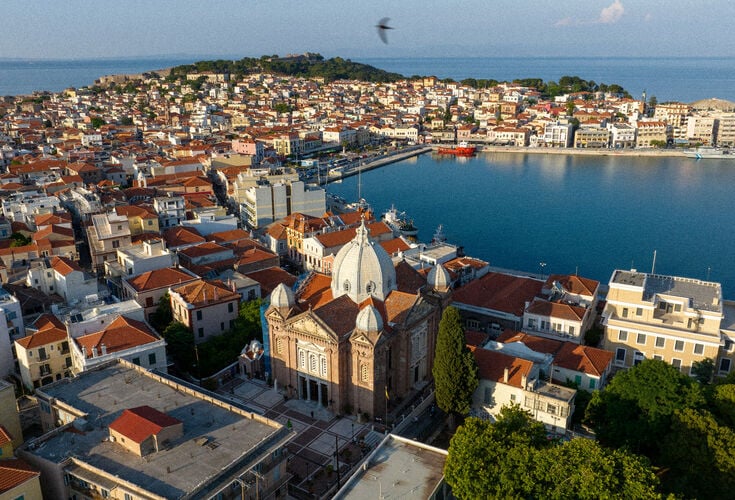
There’s so much to love about Mytilene. Strolling along the waterfront, you pass lively cafes and shops and admire neoclassical buildings that represent Lesvos’ prosperous past. The Old Town Hall (built in 1900) is one of the most famous creations of German architect Ernst Ziller and Sappho Square is named after Lesvos’ famous lyric poet. But the heart of Mytilene is in the backstreets and on Ermou Street, the main shopping street, full of bars, bakeries, delicatessens and ouzeries. The Archaeological Museum is in the Kioski area, at the foot of Tsamakia Park. And rising above the town is Mytilene's famous castle, originally built in around the 6th century AD and expanded by the Venetians and Ottomans.
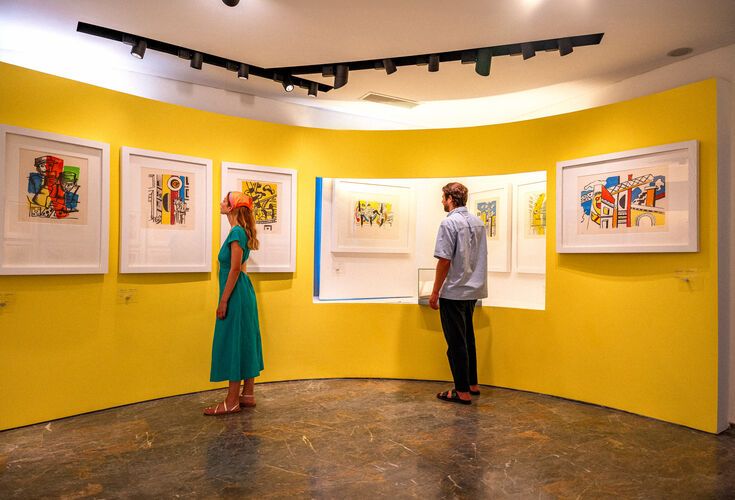
A visit to the Stratis Eleftheriadis-Tériade Museum-Library is the perfect excuse to discover the Vareias district near the airport. Tériade was a publisher and art critic who founded this gem of a museum to house a collection of the historic magazine Verve, which he published from 1937. It featured works by great artists such as Picasso and Matisse, as well as 26 illustrated books known as Grands Livres. In contrast to Verve, these featured original, hand-made and limited edition works by renowned painters. The museum also houses original collections of Greek artists, such as Yannis Tsarouchis, Orestis Kanellis and Giorgos Vakirtzis. Not far away is the Theophilos Museum, also donated by Teriade and with works by Greece’s most famous folk artist, who was born in Lesvos around 1870.
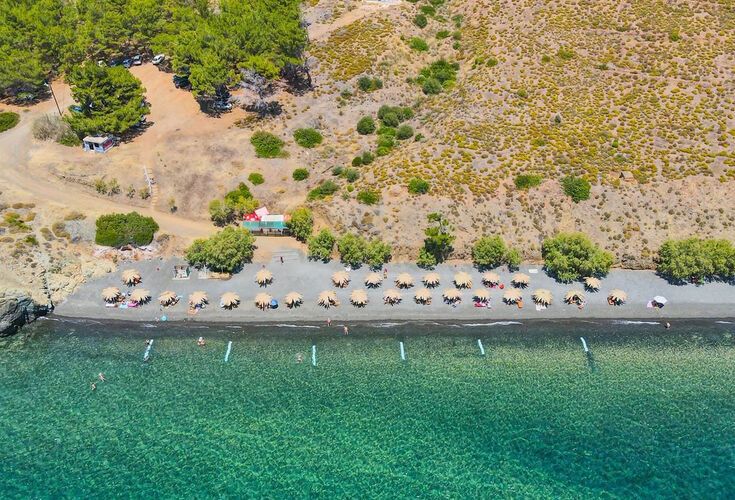
Spending a day discovering Lesvos' capital doesn’t mean you don’t get to enjoy a bit of beach time too. Agios Ermogenis beach is about a 25-minute drive south of Mytilene, in a tranquil little bay with fine yellow sand and all the facilities you could need. Alternatively, nearby Charimada beach is another family favourite that is fully organised (including water sports). When you get hungry, you can head to a nearby taverna or return to Mytilene for dinner.
Photo by: @tonydeli7 (Instagram)
The second day of your holidays in Lesvos is spent in the north as you head to Mantamados village (famous for its pottery), Molyvos (with its iconic Venetian castle) and the fishing village of Petra for dinner. On the way, you get to admire an ancient engineering masterpiece at the Roman Aqueduct in Moria. Overnight in Molyvos.
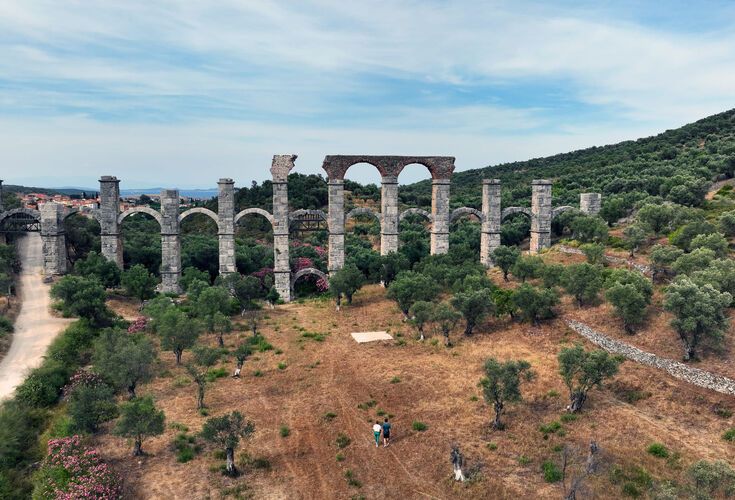
The Roman aqueduct of Mytilene dates from the late 2nd or early 3rd century AD. It transported an incredible 127,000 cubic metres of water daily from the springs on Mt Olympus (Lesvos' highest peak) to ancient Mytilene through a system of pipes that covered 28km of uneven terrain. The largely intact elevated waterway across the Moria valley, about 15 minutes outside Mytilene, gives a sense of the scale of the project. It is 170m long and supported by 17 columns made from carved stone blocks and arches finished with cinder blocks and local marble.
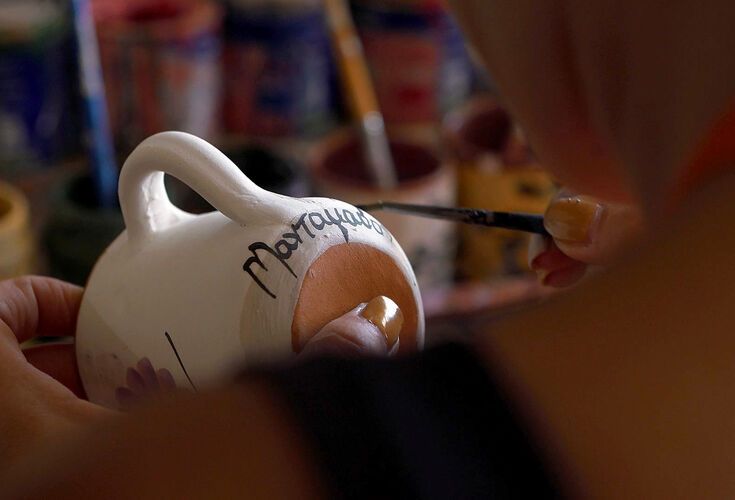
Mantamados is your introduction to the mountain villages of Lesvos. As with all villages on the island, the best way to get a feel for it is to wander the narrow streets, past the courtyards and homes of the locals. Life here revolves around the cafes and tavernas in the main square, by the 18th century Church of St Basil Mantamados. Many residents are livestock farmers (so be sure to try the local cheese, as well as the honey and olive oil). The village also has a long tradition of pottery, which can still be seen in the pottery workshops.
You can learn how to turn a piece of olive wood into a decorative object in an Olive Wood Lesson at the Olive Wood House in Pamfila village, on the road from Mytilene to Mantamados (advance booking necessary)
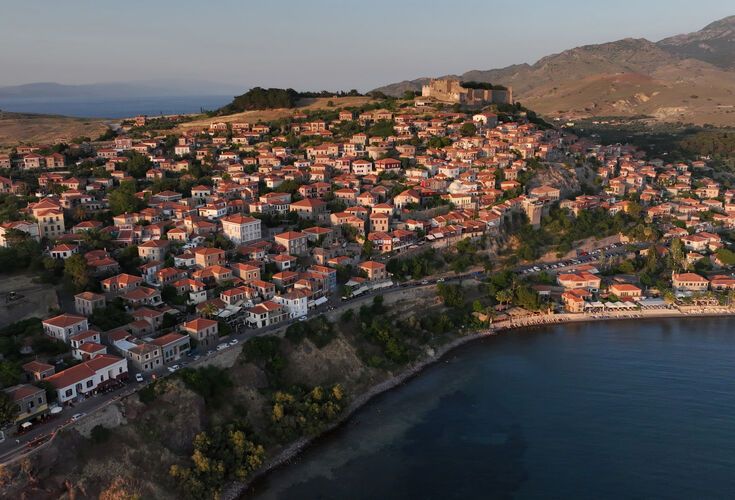
Visiting Molyvos (also known as Mithymna) is a must during any holidays in Lesvos. Built on a hill above the sea, it is a protected settlement, with colourful stone houses and a picturesque harbour. The highlight (literally, when it is lit up at night) is the Venetian castle, which offers fantastic views of the town and North Aegean Sea. Whether or not you stay the night, make sure to leave plenty of time to wander Molyvos' cobblestone alleyways and visit sights like the Ottoman Baths (now a museum). Molyvos beach, meanwhile, is fully organised, with a mix of sand and fine pebbles and there is a choice of small tavernas that have retained the traditional style of the region.
The Euphoria Lesvos Festival (a wellness event focused on promoting mental and psychological health) is held in Molyvos every September.
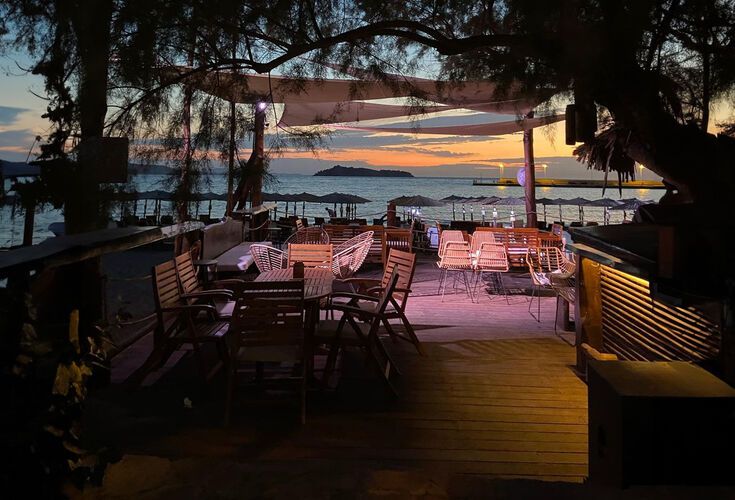
About 4km along the coast from Molyvos, Petra is a fishing village with more cobbled streets and red-tiled houses. It is best known for its Blue Flag beach and 18th-century Church of the Virgin Mary Glykophilousa. Achilles is said to have passed by Petra on his way to the Trojan War. But your reason for being here is to enjoy a dinner in taverna with a sunset sea view or in one of the picturesque alleyways.
Photo by: @gonul.hh (Instagram)
Your excursions in northern Lesvos continue with outdoor activities and plenty of beach time near Molyvos and a taverna meal in Sikaminea, where you can choose between mountain or sea. Overnight in Molyvos.
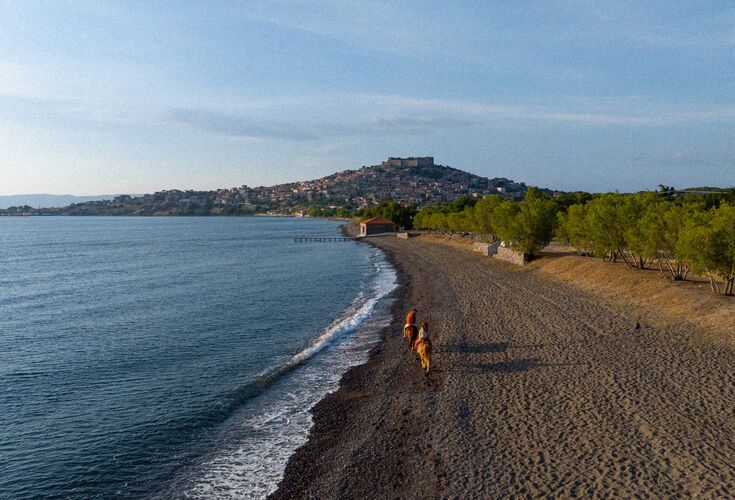
If you love nature activities, you won’t need much persuading to join our recommended activity this morning. Horse riding in Molyvos is the perfect way to explore the countryside around Molyvos. Ippos Horse Riding offers experiences for all the family and all riding abilities. Excursions are on trails with views of Molyvos Castle and along the coast, past churches and over wooden bridges following ancient footpaths.
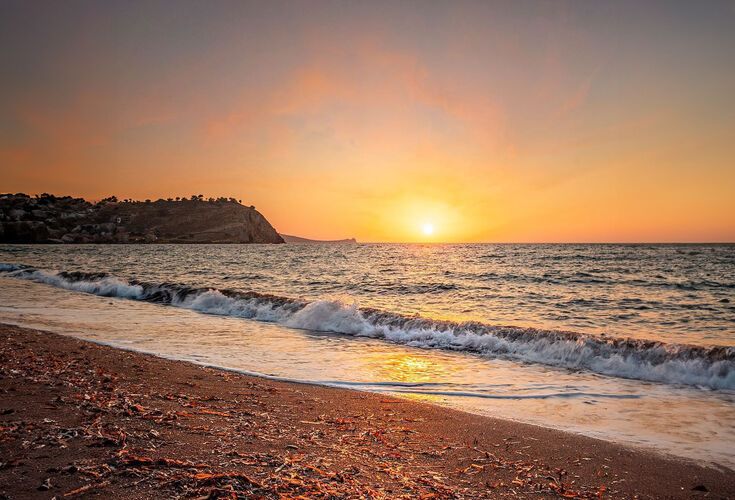
There is a selection of beaches near Molyvos. Anaxos is a family favourite with a Blue Flag and a full 700m of sand, as well as facilities such as sunbeds & umbrellas and water bikes and canoes for hire. Petra also has a Blue Flag and watersports and caters to all tastes. And Tsonia is a semi-circular cove near the settlement of Klio, with a mix of sand and pebbles and green-blue water. It remains relatively quiet even in peak summer and has a taverna and other amenities.
Photo by: @ruthcorkephotography (Instagram)
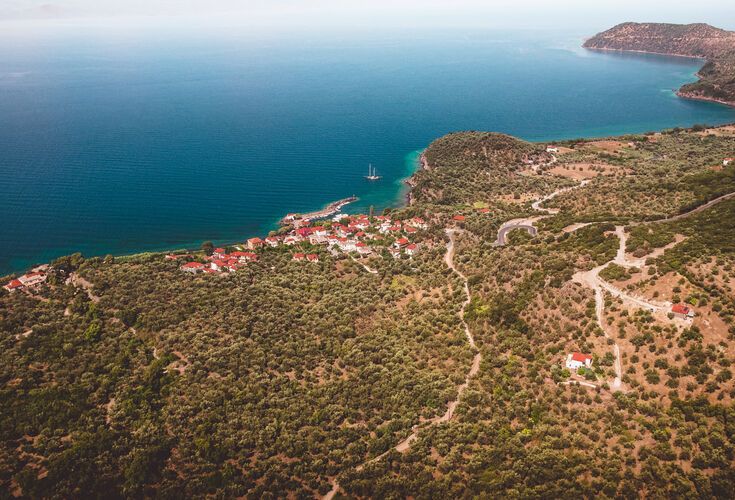
Next comes a choice of hillside or sea view for a taverna meal. Sikaminea (or Sikamia as it is known locally) is a mountain settlement with mansion houses and a folk museum), while Skala Sikamineas (indicating that it is by the sea) is about 3km below it. Some of the ouzeries and tavernas in its picturesque harbour are a century old. Look out for the almond-based sweets in both settlements. They are local specialities.
You head to Plomari today, the home of ouzo. But before exploring the history (and taste) of Greece’s famous aniseed-flavoured tipple that has become synonymous with Lesvos, you visit an eco-farm and have the option of a half-day boat trip or the morning on the beach.
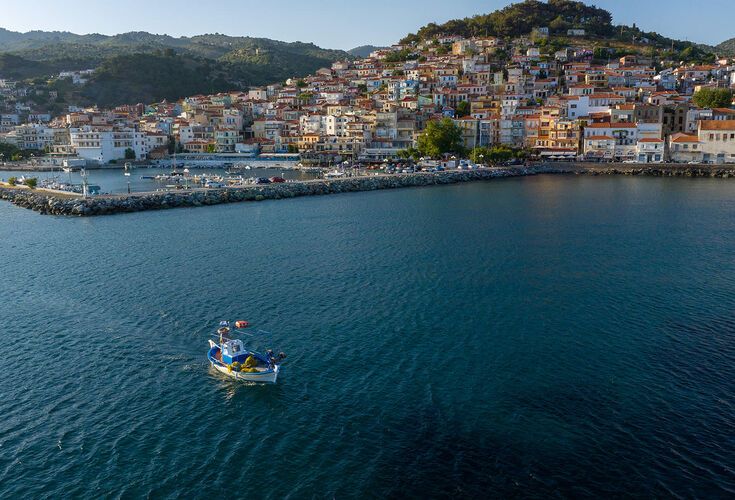
Departing from the small port of Plomari and following the rugged beauty of the southern Lesvos coastline, a boat trip allows you to stop at otherwise inaccessible beaches. You reach Panagia Krifti, a chapel built literally into the rock. Legend has it that a local maiden hid from the Turks here during the Ottoman occupation. Alternatively, you can always opt for a beach near Plomari, including Ammoudeli (around 300m from the main square of Plomari), Agios Isidoros (spacious and with all the amenities), Tarti (exotic and relaxed), Melinta (more chilled and secluded) and 8km-long Vatera (the longest beach in Lesvos).
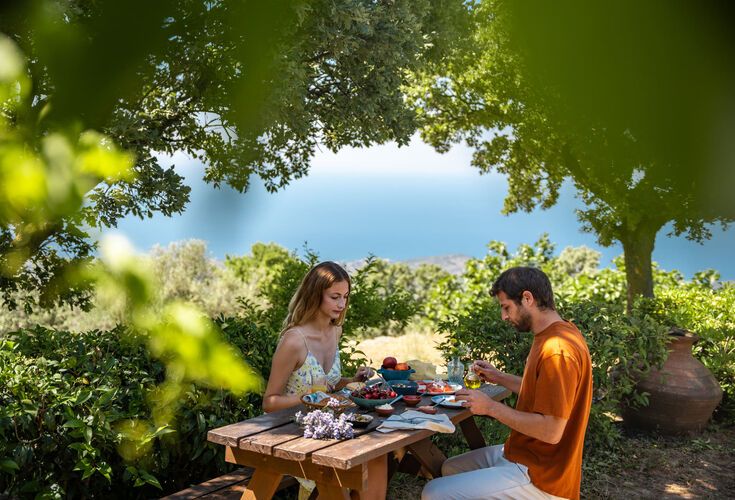
About half an hour's drive from Plomari, the Toumba Eco Farm offers a range of outdoor activities (hiking, mountain biking, horse riding, mushroom picking and bird watching). But you will also enjoy just visiting the farm or cafe, which offer a genuine farm-to-table experience with the bonus of views of both mountain and sea. To appreciate the beauty of the area, there is a 3km river walk past plane trees, oaks and poplars.
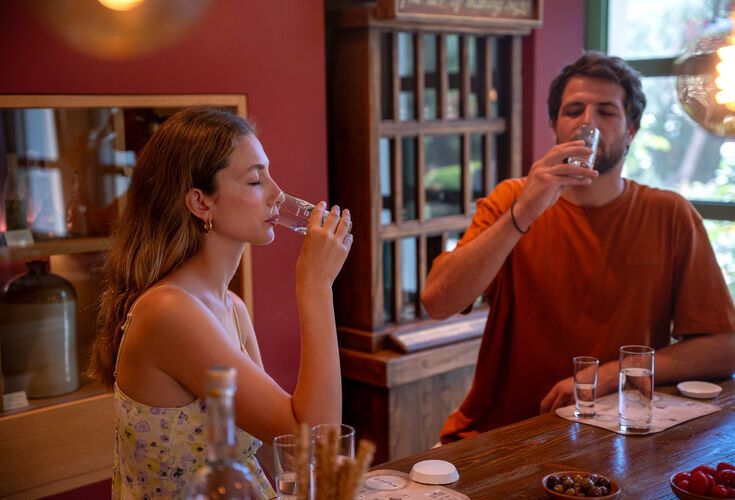
Make sure to leave plenty of time to explore Plomari and its ouzo-related history. Merchant families from Asia Minor settled here and elsewhere on Lesvos in the 19th century, bringing with them their secret family recipes for distilling ouzo. There are two ouzo museums at the Isidoros Arvanitis Distillery and the Barbayianni Distillery & Museum on the outskirts of Plomari, which tell the full story of the famous spirit associated with the Greek summer. It will whet your appetite for seafood meze with a glass of ouzo, which you can enjoy in many places in Plomari, especially in the tavernas and cafes of the picturesque harbour.
At the end of June and beginning of July, Plomari hosts the Ouzo Festival, where you can taste different ouzos and meet the distillers behind the labels.
Continue your activities around Plomari with a morning learning about the gift of olive oil. After visiting an olive mill-turned-museum, you head to central Lesvos for a couple of cultural stops before moving on to the small port town of Skala Kallonis for an afternoon swim and a meze meal. Stay overnight in Skala Kallonis.
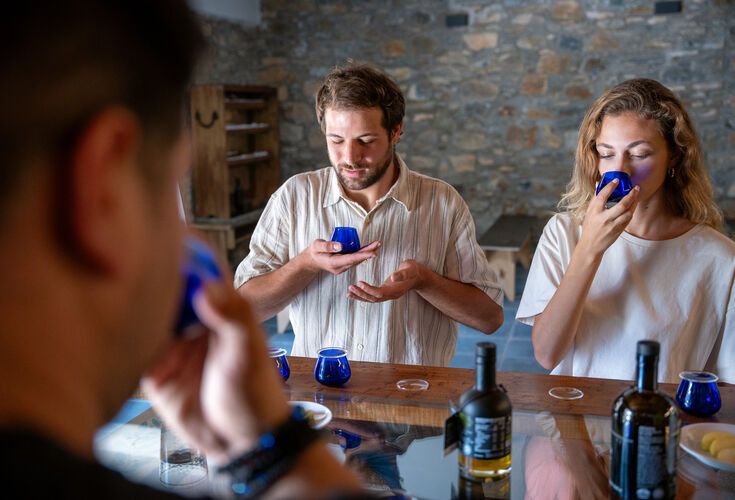
A visit to the Protoulis Olive Mill & Museum is the perfect way to immerse yourself in the olive oil tradition of Lesvos. Guided tours cover the entire process of producing high quality olive oil and include olive oil tasting in a specially designed tasting room, where you can learn about the qualities and flavours of different grades of olive oil and why extra-virgin olive oil is responsible for many of the health benefits of the Mediterranean diet.
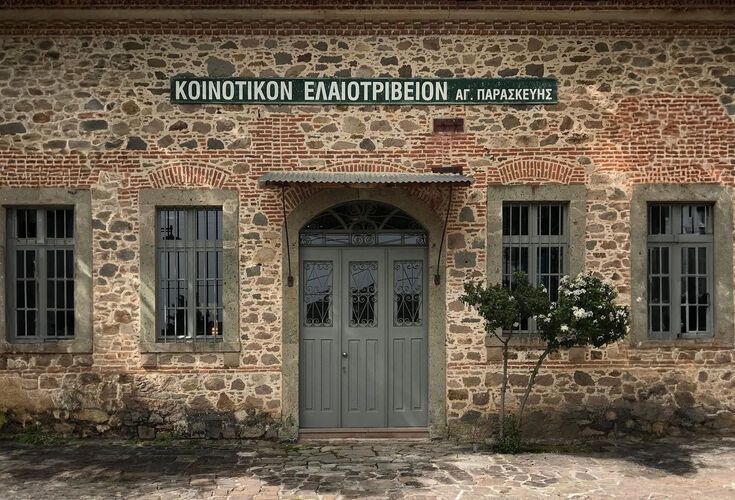
Heading north, the next stop is the village of Agia Paraskevi Kallonis, where you can enjoy more cultural highlights. Founded in 2014, the K-Gold Gallery hosts contemporary art exhibitions as well as cultural exchanges, residencies and workshops for local and visiting artists. Next, the Museum of Industrial Olive Oil Production explains how pressing olive oil has changed over time and explores the impact of olive cultivation on the region's inhabitants. Located in an old communal olive press on the outskirts of Agia Paraskevi, the museum features early mechanical equipment that has been lovingly restored. You’ll learn about every aspect of olive oil production, from crushing the olives to pressing the olive pulp and separating the olive oil from the water. There is a choice of tavernas in Agia Paraskevi.
Photo by: @workacholic (Instagram)
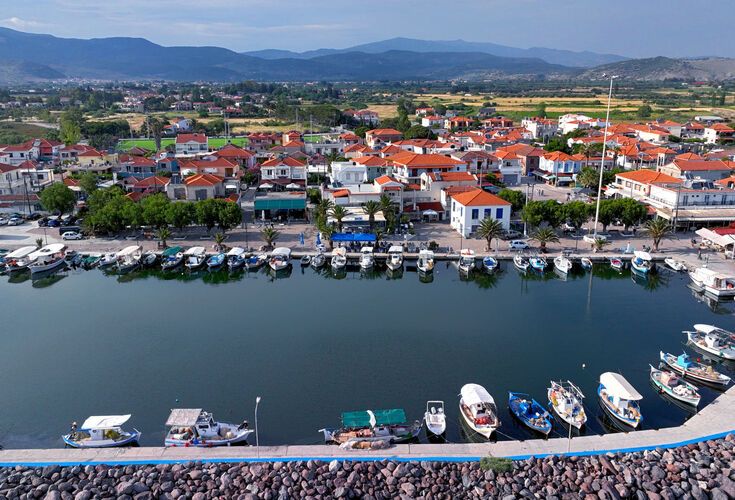
After your early start, you are rewarded with an afternoon swim and meze taverna meal in Skala Kallonis, the largest settlement in the area. Don’t miss the opportunity to try the Kalloni sardines, famous for being juicy and delicious and perfectly accompanying a glass of iced ouzo. There are plenty of tavernas and cafes as well as places to stay. But before you settle down to eat, hit the beach, with almost 2km of sand and with facilities from sunbeds & umbrellas to cafes and tavernas.
After a morning birdwatching and/or visiting to the Pessa Waterfalls, you head into the foothills of Mt Olympus to visit the picturesque village of Agiasos. Enjoying local delicacies in the village square is followed by exploring the wooded hillside on an easy hike. Your day ends in the fishing village of Perama for dinner before returning to Skala Kallonis for the night.
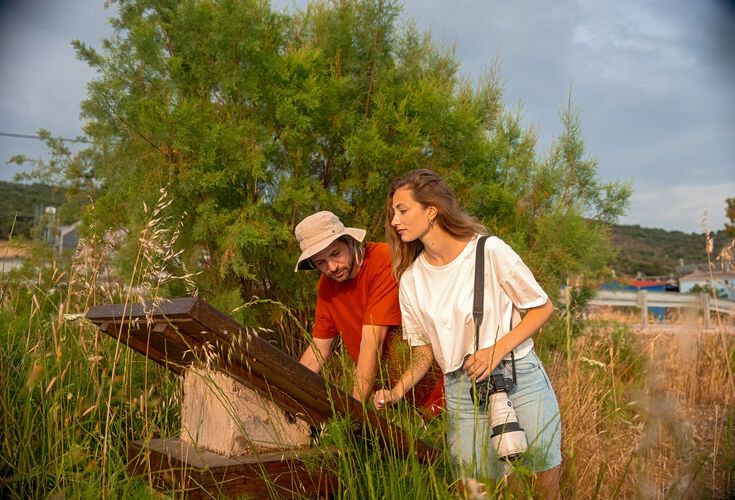
The area is popular with bird lovers because of the Natura 2000-protected wetlands of the Kallonis Salt Marsh, which attract more than 100 species of migratory birds, including flamingos in autumn and spring. There are organised birdwatching experiences or you can just head to one of the observatories (binoculars are a big bonus). Other migratory birds from Africa and Asia include black and white storks, thrushes and warblers.
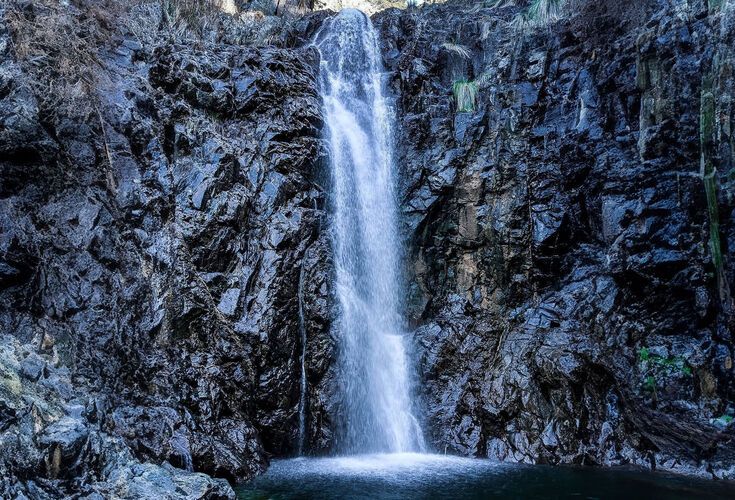
Another favourite of nature enthusiasts is the Pessa Waterfalls, which you reach by following a short trail through the countryside. The walk is pleasant at any time of year, but the waterfalls only flow in winter and spring (to the end of April). The path is signposted from the road midway between Achladeri and Vasilika. The water comes from Lake Agiasos and it falls of 15m at Pessa before continuing to Kallonis Bay.
Photo by: @ig_lesvos_ (Instagram)
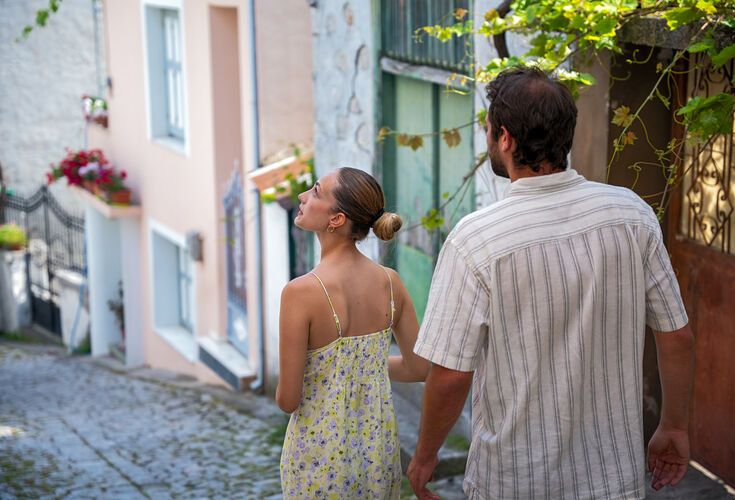
Heading into the foothills of Mt Olympus, you reach Agiasos, a traditional mountain village with narrow paved streets and stone houses, surrounded by cherry orchards, olive groves and chestnut trees. There is a Folk Art Museum, where you can learn more about the local craftsmanship (including woodcarving and ceramics) and a choice of tavernas and quaint cafes for lunch in and around the village square, above the church of Panagia tis Agiasou.
There are a number of walks starting from Agiasos that allow you to enjoy the forest on the slopes of Mount Olympus. Ask in the village for more details.
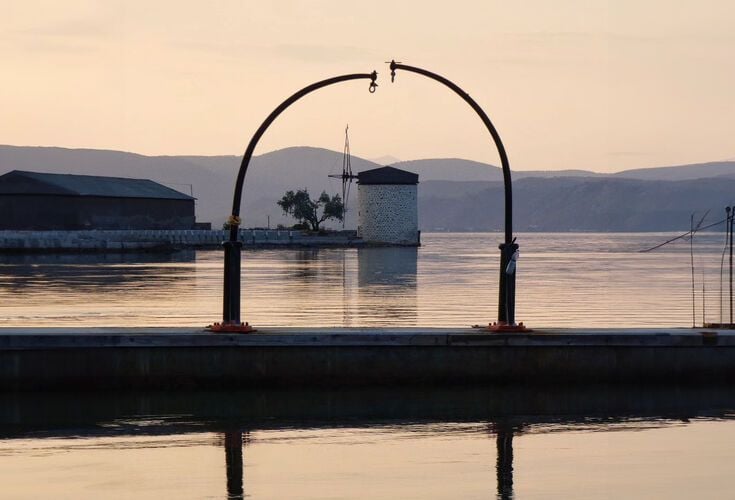
End the day in Perama, a picturesque little harbour overlooking the bay of Geras. There are several places to eat and drink, allowing you to soak up the atmosphere of one of the most important fishing settlements in Lesvos. Every August, the local fishermen hold an octopus festival here.
Photo by: @mikekonstantellis (Instagram)
You head west this morning. Visiting Vatoussa and then Chidira, you experience more of Lesvos’ traditional villages, with local delicacies and cultural attractions and the option of visiting a winery. Reaching Skala Eressou (or Eressos) on the west coast, end the day with an evening swim and dinner in a waterfront taverna.
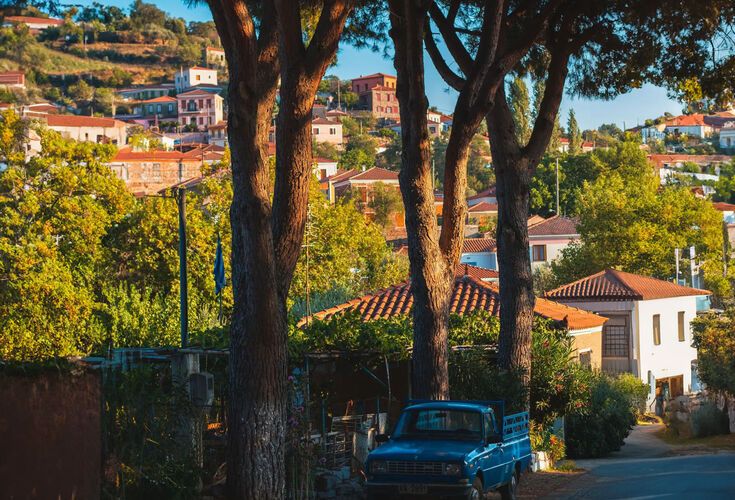
You head to Vatoussa this morning, a traditional settlement of around 500 inhabitants (mostly involved in agriculture) at an altitude of 300m. It’s worth waiting to enjoy your breakfast here, in one of the cafes of the village square, before visiting the village’s folklore museum. Named Archontiko Gogou (Gogo’s Mansion), it is housed in the most striking building of the village, a grand neoclassical home built by the village doctor for his daughter in 1890. The collection includes agricultural and household items, a library and dresses and other clothing from days past.
Photo by: @ant_papoutsis (Instagram)
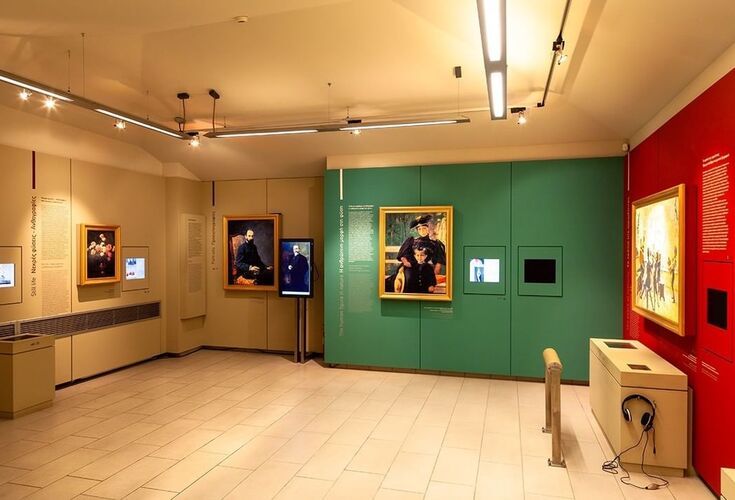
Very close to Vatoursa is Chidira, another traditional village which, intriguingly, is home to Greece’s first exclusively digital art museum. The art in question includes digital reproductions of works by Georgios Jakobides, who was born in Lesvos in 1853 and lived until 1932, during which time he became one of the main representatives of the Greek artistic movement of the Munich School. He was also the first curator of the National Gallery of Greece in Athens. Also worth visiting is the Methymnaeos Winery, just outside the village, where you can enjoy wine tasting of organic wines made from grapes found exclusively on Lesvos. Or you can discover Vathilimno Waterfall (flowing in winter and spring months), which involves a 30-minute walk near the village of Pterounda.
Photo by: @explorelesvos (Instagram)
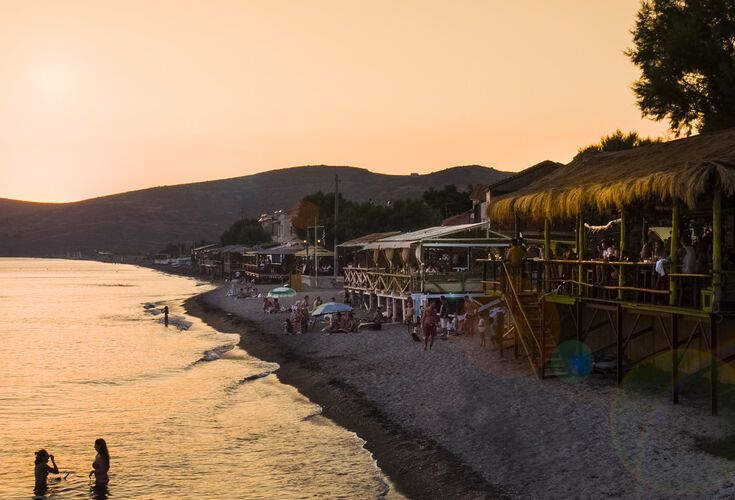
Your last stop today is Skala Eressou (or Eressos), the largest coastal settlement in western Lesvos (there is also a mountainous part of the village, named Eressos, around 7km inland). Eressos is the birthplace of the poet Sappho, famous for her praise of love between women and has plenty of dining options and a Turkish hammam dating from 1850, now luxuriously restored as part of a hotel. Skala Eressou has one of the most popular beaches in Lesvos. Find yourself a beach bar and order yourself a sunset drink, followed by dinner at one of the many nearby restaurants. Skala Eresou also has an archaeological museum.
On the last day of your holidays in Lesvos, you get to explore the famous Petrified Forest of Lesvos, in Sigri, before relaxing on remote Faneromeni beach and returning to Sigri for dinner. Return to Mytilene airport or port for your journey home the following morning.
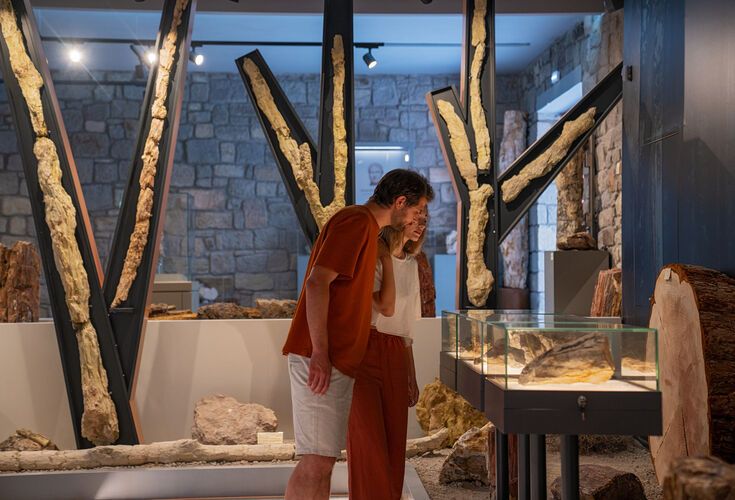
It is astonishing to think how old the Petrified Forest of Lesvos is. The trunks, branches, roots, leaves, seeds and even some animals that have been petrified were alive some 20 million years ago, when the forest they lived in was buried in volcanic ash. This is why Lesvos’ Petrified Forest is referred to as the ‘Pompeii of the ancient world’ and is now part of UNESCO’s World Geoparks Network. It covers a large area in western Lesvos, but the best experience is to drive straight to Sigri, where you can visit the Natural History Museum. Ask to be shown around the museum and the surrounding area by a geologist.
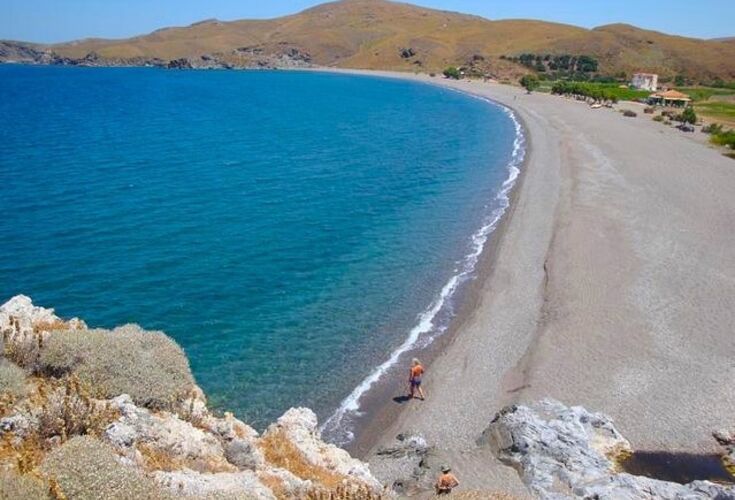
Just a few kilometres north of Sigri, Faneromeni beach is one of the longest and quietest beaches in Lesvos. It has only one canteen and there are trees dotted along its length, providing some shade if you don’t have an umbrella. At one end is the tiny chapel of Panagia Faneromeni, built into a cave, which you can visit. Otherwise, it’s a case of lying back and soaking up the relaxed atmosphere of the secluded setting.
Photo by: @greecetravel (Instagram)
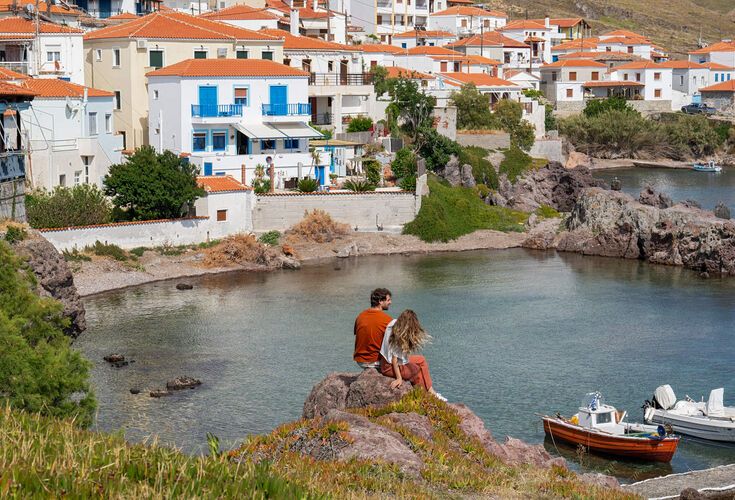
Returning to Sigri village, your holidays in Lesvos end with a taverna meal overlooking the island’s largest natural harbour. The size of the bay explains why the Ottomans built the Castle of Suleiman here in 1757, to protect the area from pirates. Enjoy a stroll around Sigri, looking out for windmills and the church of Agia Triada, before settling on a taverna for a meal to end your day.
We hope you enjoyed our itinerary in Lesvos. Remember, you can adapt it any way you want, depending on when and for how long you plan to take holidays in Lesvos and your personal preferences.














